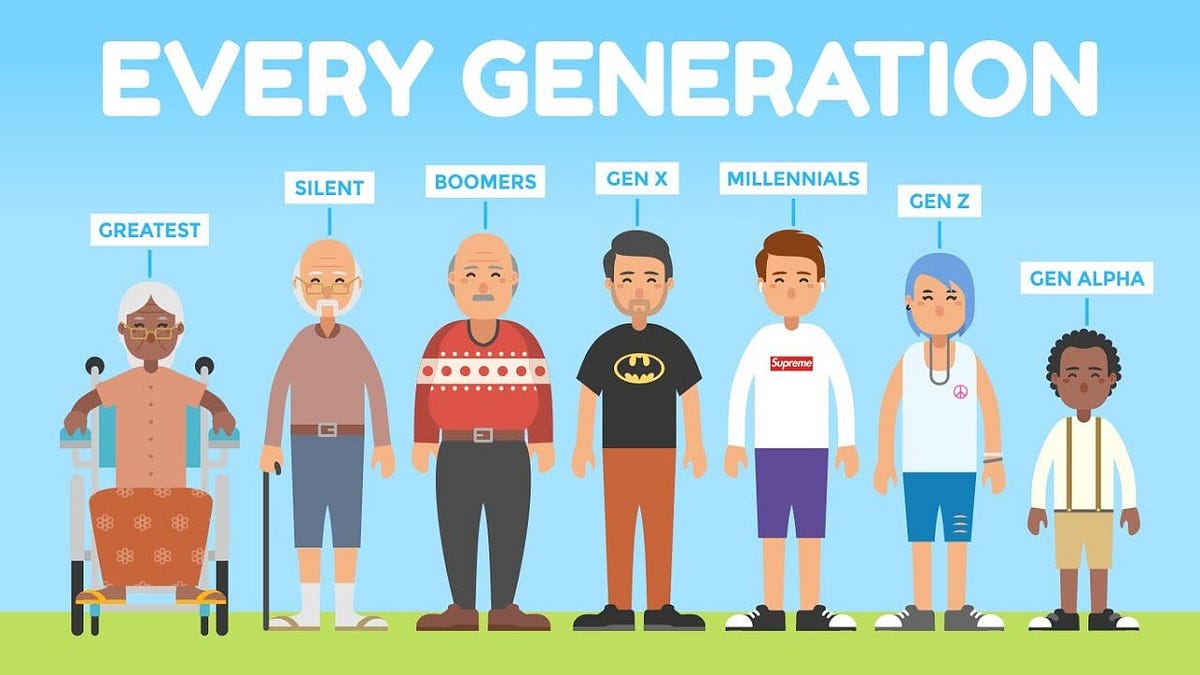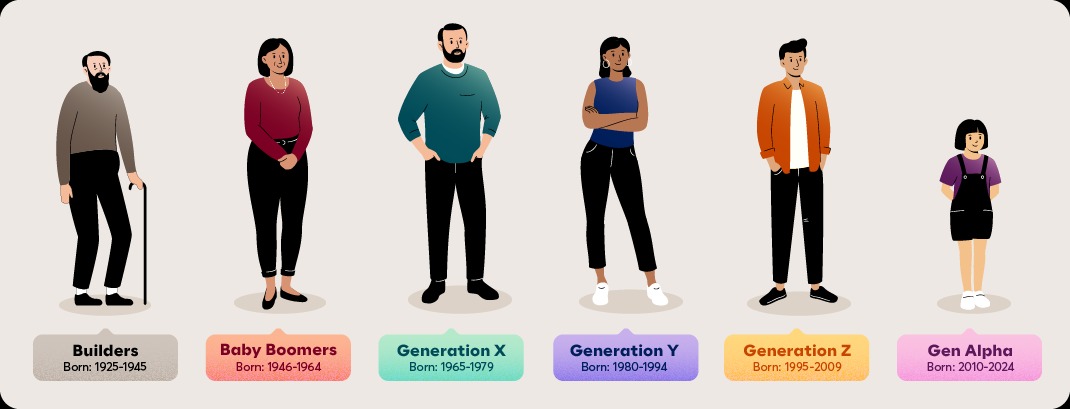Technology has transformed the way humans live, work, and interact. Nowhere is this change more visible than in the difference between Old Skool generations—Baby Boomers, Gen X, and early Millennials—and Gen Z, the first generation truly born into the digital age.
From communication to shopping, from learning to entertainment, the daily routines of Gen Z are radically different compared to the habits of their parents and grandparents. Let’s take a deep dive into how technology has reshaped daily life and created a cultural gap between generations.
☎️ Communication: From Landlines to Instant Messaging
- Old Skool:
In the past, communication required effort and patience. People used landline phones, telegrams, and handwritten letters. Family updates often came weeks later, and waiting for a reply was part of the charm. Even with the arrival of early mobile phones, texting was expensive, and calls were short. - Gen Z:
Today, conversations happen in seconds. With WhatsApp, Snapchat, Instagram, and voice notes, Gen Z prefers instant, casual, and visual communication. Emojis and memes replace long sentences, and video calls have made distance almost meaningless.
👉 Biggest Shift: Communication went from slow and meaningful to instant and visual.
📺 Entertainment: Limited Choices vs Endless Streams
- Old Skool:
Entertainment used to be rare and precious. Families gathered around the radio or black-and-white TV. Cassettes, vinyl, and VHS tapes were treasures. Waiting for a weekly TV show or live cricket commentary built excitement. - Gen Z:
With Netflix, YouTube, TikTok, and Spotify, entertainment is available on demand, anywhere, anytime. Music, movies, gaming, and short-form content are endless. While this gives variety, it also shortens attention spans—Gen Z consumes content in minutes or even seconds.
👉 Biggest Shift: Old Skool had fewer options but deeper experiences; Gen Z has unlimited options but quicker consumption.
Gen Z vs Old Skool: How Technology Changed Daily Life
💼 Work & Career: Stability vs Flexibility
- Old Skool:
Careers were about loyalty and stability. A good government or corporate job with pensions was a life goal. Many stayed in one profession for decades, valuing financial security over passion. - Gen Z:
Gen Z seeks freedom, creativity, and work-life balance. Remote jobs, freelancing, startups, and side hustles dominate their career paths. They value mental health and flexibility more than traditional stability.
👉 Biggest Shift: Old Skool = job for life. Gen Z = work anywhere, change anytime.
🛍️ Shopping & Consumption: From Bazaars to One-Click
- Old Skool:
Shopping meant visiting local markets, malls, or tailors. Purchases were deliberate and durable, and bargaining was part of the experience. People saved money to buy big items, and fashion trends changed slowly. - Gen Z:
Online shopping platforms like Amazon, Daraz, and AliExpress dominate. With one click, anything can be delivered in days. Social media trends influence purchases, and “fast fashion” cycles change weekly.
👉 Biggest Shift: Old Skool = save & buy lasting things. Gen Z = spend & follow trends.
🎓 Learning: Libraries vs Google & AI
- Old Skool:
Education was built on teachers, libraries, and textbooks. Students relied heavily on memorization, and knowledge required hours of research in physical books. - Gen Z:
Today, learning is digital and personalized. Platforms like YouTube, Khan Academy, Coursera, and AI tools like ChatGPT allow self-paced, skill-based learning. Gen Z values practical skills over rote memorization.
👉 Biggest Shift: Old Skool = formal & structured learning. Gen Z = on-demand, digital learning.
🌍 Social Life: Real Gatherings vs Virtual Connections
- Old Skool:
Socializing meant visiting friends, playing outdoor games, or hosting family dinners. Relationships grew slowly but were deeply rooted in real-life interactions. - Gen Z:
Much of Gen Z’s social life happens online—gaming communities, group chats, Instagram stories, and TikTok trends create a sense of belonging. Physical hangouts are still valued, but digital life dominates.
👉 Biggest Shift: Old Skool = face-to-face bonds. Gen Z = online communities.

🌱 Values & Worldview: Tradition vs Innovation
- Old Skool:
Strongly tied to tradition, family, and respect for authority. Life was about following cultural norms, religious practices, and community values. - Gen Z:
More individualistic and socially aware, Gen Z pushes for climate action, gender equality, and mental health awareness. They are not afraid to question systems or authority.
👉 Biggest Shift: Old Skool = conformity & tradition. Gen Z = innovation & activism.
🔄 The Common Ground
Despite the differences, both generations bring valuable strengths:
- Old Skool offers discipline, patience, and wisdom.
- Gen Z brings creativity, adaptability, and innovation.
The real power lies in combining both: Old Skool experience with Gen Z’s digital fluency can solve problems faster and more sustainably.
✅ Conclusion
Technology has changed daily life in ways that Old Skool generations could hardly imagine. From waiting weeks for a letter to receiving instant texts across the globe, from sitting in libraries for hours to learning coding on YouTube in a single day—life has shifted dramatically.
While Gen Z thrives in a fast-paced, digital-first world, the Old Skool way of patience, depth, and simplicity still holds immense value. Instead of clashing, these generations can complement each other—using technology without losing the warmth of tradition.
In the end, the story of technology is not about Gen Z vs Old Skool—it’s about how both can adapt, learn, and build a future together.



